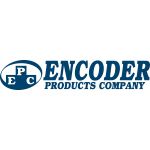How GE Appliances Built an Innovation Lab to Rapidly Prototype Products
The ioTrust Security Solution
Is Small Design Flaw Robbing Manufacturers of Valuable Time and Productivity in Milling Operations?
Smart Factories Will Deliver $500B In Value By 2022
The Importance of the Edge for the Industrial Internet of Things in the Energy Industry
Improving Efficiency in Counting Applications
The US Navy 3D printed a concept submersible in four weeks
Japanese companies form alliance to accelerate smart factories
76 Percent of U.S. Workers Do Not Fear Automation, According to Randstad US
Shop-Floor Digitization for Today's Mid-Size Manufacturer
The Impact of the IoT Demystified
New 3D Printing Technique Significantly Strengthens Materials
Predictive Maintenance, the 1st Step Towards Self-Maintenance and AI
4 Steps on Your Journey Toward Industry 4.0
AFRL researchers explore automation, additive technologies for cost efficient solar power
Records 2371 to 2385 of 3081
First | Previous | Next | Last
Featured Product

NORD Delivers Powerful, Reliable Drive Solutions for Demanding Packaging Applications
Manufacturing and Automation - Featured Company

